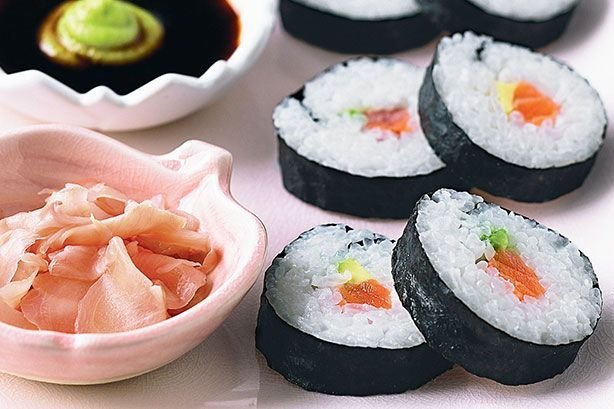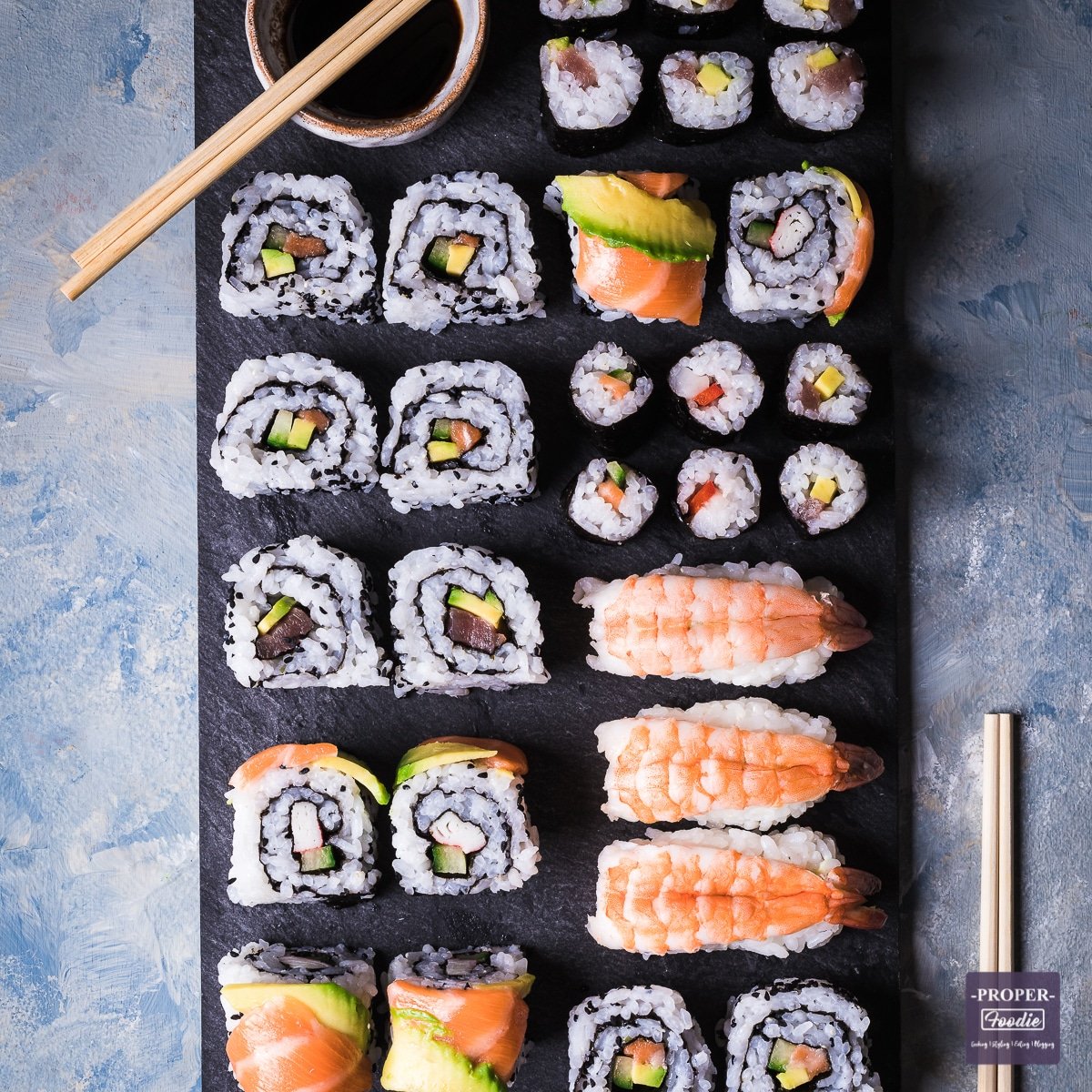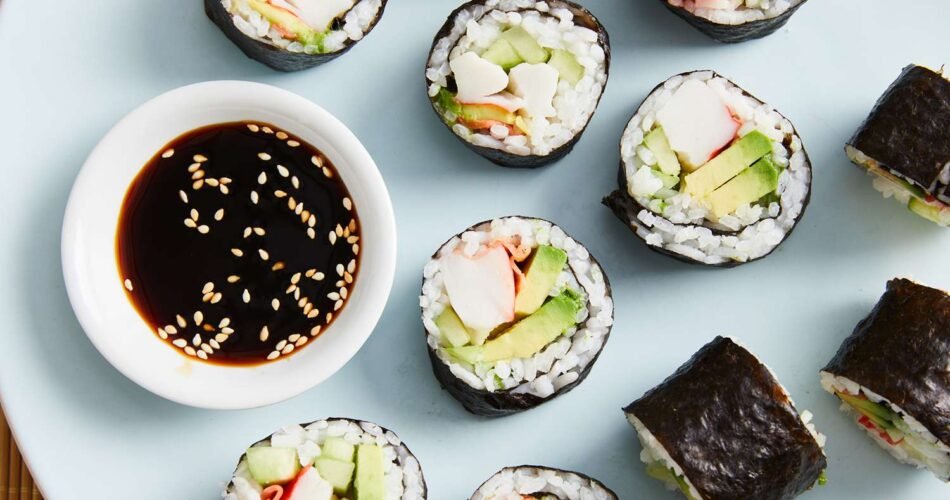What does sushi taste like? This question often lingers in the minds of those who haven’t had the pleasure of experiencing one of Japan’s most famous culinary exports. As someone who has explored the world of sushi quite extensively, I’d love to share my perspective on its unique and delightful flavors.
What Is Sushi?
Sushi is a Japanese dish that has captivated food lovers around the globe. It originated in Southeast Asia and made its way to Japan, where it underwent significant transformations. Traditionally, sushi consists of vinegared rice accompanied by a variety of ingredients such as raw fish, vegetables, and sometimes tropical fruits. Over time, it has evolved to include not only ‘nigiri’ and ‘maki’ rolls but also sashimi, which features the fish without the rice.
What Does Sushi Taste Like? The Answer
Sushi tastes like a delicate balance of flavors and textures. The rice, seasoned with a hint of sweet and tart vinegar, provides a soft and slightly sticky base. Depending on its pairing, the taste can vary significantly. Sushi with raw fish might offer a lean, clean taste that’s a touch briny, reflecting the deep, vast ocean. When combined with ingredients like seaweed, wasabi, and pickled ginger, it creates a symphony of savory, spicy, and fresh elements that dance on the tongue.
Many people find themselves curious about what sushi tastes like because it is inherently different from the western palate’s usual staples. The thought of raw fish can be intimidating, but sushi’s refined simplicity is precisely what can lead to an explosion of flavor without overwhelming the senses.

Variations in Taste of Sushi
Sushi’s taste varies widely depending on the region. For instance, Tokyo-style sushi often features nigiri with a focus on high-quality fish like tuna, while Osaka is famous for its pressed sushi (‘osaka-zushi’). Regional flavors and traditional techniques greatly influence how each piece of sushi will taste.
Seasonal variations further diversify sushi’s taste profile. Chefs choose fish that’s in season, ensuring optimal freshness and flavor. This attention to seasonality is not merely traditional; it’s a testament to the depth of flavor found in sushi’s primary ingredient—fish.
The individual types of sushi, such as ‘uni’ (sea urchin), ‘ikura’ (salmon roe), or ‘tamago’ (sweet egg omelette), all have their unique flavor profiles. Uni brings a rich, creamy taste, ikura offers bursts of salty ocean essence, and tamago presents a sweet, custard-like flavor.
Nutritional Benefits of Sushi & Impact on Taste
Sushi isn’t just about taste; it also packs nutritional benefits. Lean fish used in sushi is high in omega-3 fatty acids, which are great for heart health. Additionally, the minimalistic approach to sushi means that each ingredient, often low in calories but high in protein and essential vitamins, contributes to an overall nutritious meal.
The healthiness of sushi might impact its perceived taste, too. Knowing that you’re indulging in food that benefits your body might make the fresh, clean flavors of sushi all the more enjoyable.

Sushi in Culinary Uses
While sushi is often enjoyed on its own, it’s also a popular addition to various dishes and serves as a centerpiece in fusion cuisine. Sushi bowls and sushi burritos are two trendy ways people enjoy these unique flavors.
The subtle flavors of sushi rice and the freshness of the fish pair beautifully with a range of ingredients including avocado, cream cheese, and even fruits like mango, creating a rich tapestry of tastes that complement each other in modern recipes.
Acquiring and Preparing Sushi
Finding quality sushi requires a keen eye. Whether at a restaurant or a store, look for sushi-grade fish, which is fresher and handled with care to prevent bacterial growth. For homemade sushi, a sharp knife and proper technique are essential to preserve the fish’s texture and enhance the dining experience.
Pairing Sushi with Other Flavors
Pairing food and drink with sushi is an art in itself. Delicate flavors call for subtle pairings, like a crisp white wine or light beer. For contrast, try pickled or fermented sides, which add a tangy or salty punch to each bite. Soy sauce, a touch of wasabi, and ginger cleanse the palate between different types of sushi.

Recipe: Simple Homemade California Roll
Making sushi at home can be a fun and delightful experience. Here’s a simple recipe to create your own California Roll:
- Nori (seaweed sheets)
- Sushi rice (cooked and seasoned with sushi vinegar)
- Imitation crab meat (or cooked crab)
- Cucumber (cut into long strips)
- Avocado (sliced)
- Sesame seeds (for garnish)
- Bamboo rolling mat
- Plastic wrap (to cover the bamboo mat)
Directions:
- Lay the plastic-covered bamboo mat flat and place a sheet of nori on top.
- Spread a thin layer of sushi rice over the nori, leaving a small margin at the top.
- Arrange strips of crab meat, cucumber, and avocado across the center of the rice.
- Starting from the bottom, carefully roll the sushi into a tight cylinder, using the bamboo mat for support.
- Sprinkle sesame seeds over the roll, then slice into bite-sized pieces with a sharp, wet knife.

Final Words
But what does sushi taste like? Sushi can offer a harmony of subtle, refreshing flavors that might just surprise the uninitiated. It’s about freshness, balance, and the careful selection of ingredients that together create a dining experience that’s both light and satisfying. Sushi isn’t just a meal; it’s a journey through taste and texture that’s both humble and indulgent. So, if you ask me, “What does sushi taste like?” I’d say it tastes like a refined, health-conscious culinary adventure that’s well worth exploring.

